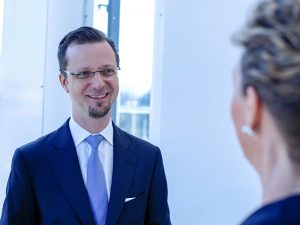
Brief summary of the case
A leading parking garage management company in Germany and Austria was facing a serious challenge in the area of customer service. It wanted to remain the market leader in customer service in the DACH region. However, the company was faced with an increasing number of customer complaints, inefficient processes and outdated technology. Customer service, previously perceived as a reactive department, had become a burden for the company, leading to massive delays and a high turnover in the team. This is where the interim manager came in, taking on the challenge of taking customer service to the next level through targeted process optimization and the use of innovative technologies.
The client: A leading parking garage management company
With 570 parking facilities in Germany and Austria and around 1,000 employees, the company is one of the largest providers of parking garage management in the DACH region. As an established market player, it relies on efficiency, reliability and maximum customer focus. However, customer service – previously the backbone of the company – had reached a critical point: long waiting times, outdated IT systems and inefficient processes were leading to growing dissatisfaction among customers and an overload on the team. The pressure to find a solution was enormous, as both employees and customers were becoming increasingly impatient.
Initial situation: High customer dissatisfaction and operational inefficiency
The situation in customer service was tense. Long waiting times of more than 15 minutes on the phone and the processing of emails, which sometimes took up to four weeks, led to massive frustration among customers. At the same time, the team was heavily overloaded, which was reflected in high staff turnover and an increasing lack of motivation. The existing IT systems, including an outdated telephone system, were neither able to meet the increasing demands nor did they offer the necessary flexibility to work efficiently and sustainably. Without a fundamental realignment, the company was in danger of losing its competitive edge.
The interim manager’s goal was clear: the realignment of customer service was to be achieved with a combination of process optimization and the use of state-of-the-art technologies. The focus was on three areas: increasing efficiency through the use of modern technologies, optimizing internal processes and promoting sustainable, positive employee retention.
The introduction of the Salesforce CRM system was intended to revolutionize customer communication and significantly speed up the processing of customer inquiries through AI integration. In addition, the focus was on replacing the outdated telephone system with a cloud-based solution in order to reduce customer waiting times to a minimum. At the same time, the team’s workload had to be reduced and employee satisfaction increased. This was to be achieved through targeted process optimization and structured change management that provided employees with the necessary security and support.
The introduction of Salesforce CRM, coupled with an AI-supported ticketing solution, was the key step towards increasing efficiency in customer service. The use of cloud telephony enabled a drastic reduction in telephone waiting times from over 15 minutes to under 45 seconds. Another important part of the measures was the restructuring of internal work processes. Outsourcing non-critical call center processes took the pressure off the team and created the necessary economies of scale to cope with the increased requirements.
In terms of change management, employees were actively involved in the change process. Daily Q&A sessions and one-on-one meetings at the start of the project ensured close communication and helped to allay concerns and fears. In addition, the team was strengthened in terms of personnel and new work areas were created to enable employees to process standard inquiries more quickly.
Another major challenge was the replacement of 500,000 customer cards that were intended for contactless use. Thanks to efficient project planning and smooth communication, this process was completed without any operational disruptions and even under budget.
The result of the comprehensive transformation was a significant improvement in service quality and a sustainable increase in customer satisfaction. Telephone waiting times were reduced to less than 45 seconds, while processing times for emails were reduced to 24 hours. The project was successfully completed with cost savings of 5% below budget. Another highlight was the significant reduction in employee turnover, which was due to the successful implementation of change management and the positive impact of the new working conditions.
The combination of modern technology, targeted process optimization and a sustainable change in corporate culture set a new industry benchmark for customer service. The service area, once perceived as a cost center, became a decisive success factor and competitive advantage.
This case impressively demonstrates how a sustainable transformation of customer service can be achieved through a clever combination of the use of technology, process optimization and change management. What initially appeared to be a challenge quickly developed into a strategic strength for the company. By reducing waiting times, improving employee satisfaction and introducing innovative technologies, customer service was not only stabilized but also expanded as a competitive advantage. The company was not only able to optimize its internal processes, but also regain the trust of its customers and set the course for future growth.
Would you like more information or do you have similar challenges? Talk to us, we will be happy to help you!
Dr. Martin Ludwig Mayr, Managing Director
martin.mayr@gointerim.com
+49 89 20 500 8695
Feel free to share this post with your network as well.

